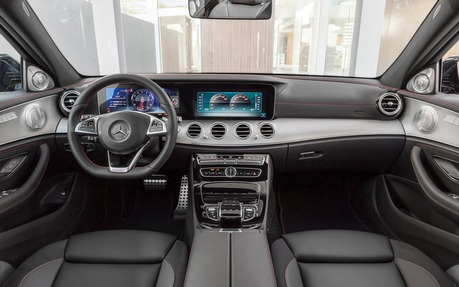Screens Just Keep Getting Bigger
Behind the wheel of a new-generation Mercedes-Benz E-Class, you can’t help but notice that there are no dials on the dashboard. You know the ones; the analog needles that tell you how fast you’re driving, what the engine temperature is and other handy information. In their place is a high-definition digital display that recreates these dials.
What’s the advantage? Physical dials react slowly because they’re limited by several factors, such as the time it takes for the tension in a cable to be transmitted to the needle, making it move. In contrast, digital dials react almost instantly. They’re currently used in cars like the Lexus LFA because its engine revs up and down so quickly that no traditional dial can keep up.
- Also: Vehicle Interior Design Trends: Wood
- Also: Controlling Your Car’s Interface with a Simple Hand Gesture
In the new-generation Mercedes-Benz E-Class, the screen that serves as the instrument panel has been stretched to the right, thus replacing a sizable part of the dash. This extension displays all infotainment system info, as well as the German car’s complex menus, allowing drivers to control settings like the ambient lighting in the passenger compartment.
The Mercedes-Benz E-Class has a very large screen. The Tesla Model S and Model X are also good examples: a 31-centimetre screen smack dab in the middle of the dashboard lets you surf the internet as well as adjust all of your car’s climate controls. As vehicles become more and more computerized, it won’t be long before we see traditional dashboards completely replaced by screens like this.
